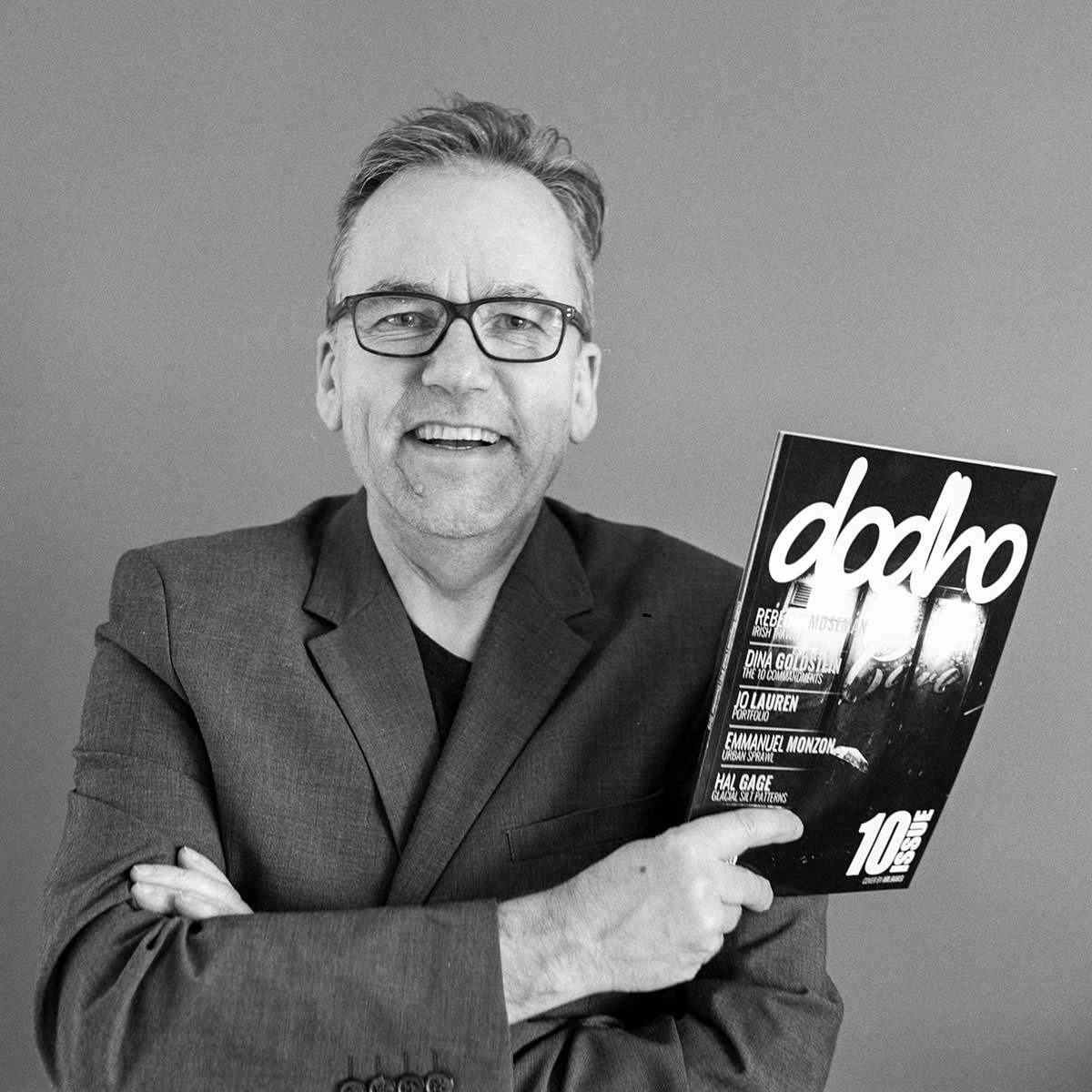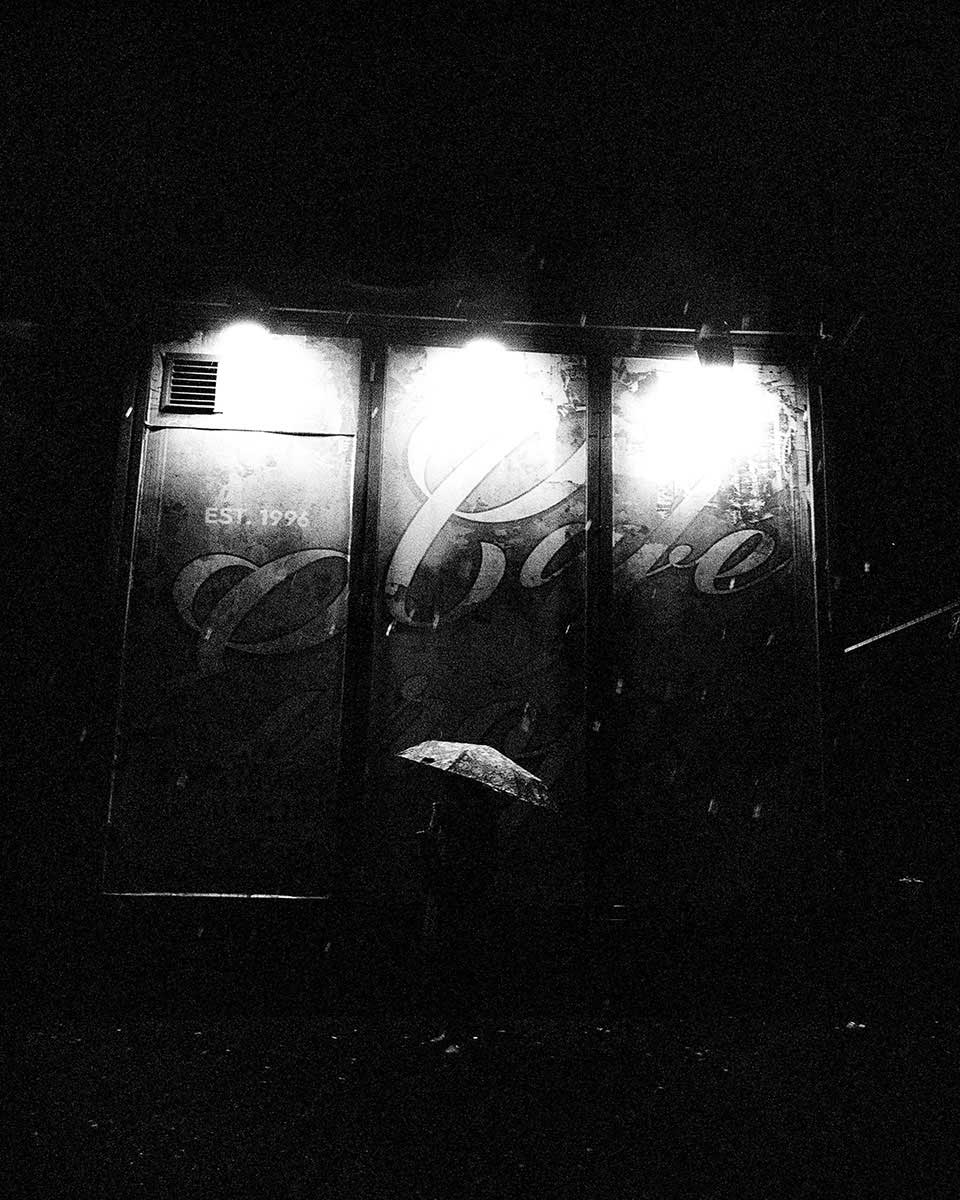My name is Ari Jaaksi, and I come from Finland. I’ve already done many things in my life.
I’ve lived in many parts of the US and in Europe, have 2 children, I’ve been married for the same lady for 30 years, I’ve been a part of the executives in companies such as Intel, Hewlett Packard, and Nokia, created digital products that have sold in millions. I have a Ph.D. in software engineering and an MSc in Education, and I’m an adjunct professor at the local university.
I started analog photography fairly recently. I fell in love with old cameras and black and white film. I feel I can express myself with that media and capture moments filtered through my life experience in traditional large- and medium format films. It has been rewarding to see recognition of my work through awards and exhibitions. But I also feel I’ve barely touched the surface of photographic expression. To me, analog photography provides a means but also the limitations; both so necessary for any art!. Ari Jaaksi was published in our print edition #10. [Print Edition][Digital Edition]
I’d like to begin this interview by discussing your image which has been selected for cover on Dodho magazine’s 10th edition. What I find interesting about your body of work is this apparent connection to nature and an interest in particular objects or compositions found in nature that are somewhat abstracted. Much like the cover image of the magazine there seems to be an emphasis on abstraction and light. Could you tell us about how you came to capture the image itself, such as it’s? location and camera used?
The weather was really miserable that day. Sleet, rain, and wind. But for me that is ideal for street photography. I love the way such weather makes my town, Tampere, Finland, look new and interesting. I had my favourite bad-weather set of equipment: a Hasselblad Super Wide, that is fairly well protected from the elements and Ilford Delta 3200 film that I push all the way to 12500 ASA. This allows me to shoot without a tripod even in such dark conditions. I had noticed this particular spot already earlier. It is very graphical and strong. Then when I saw this lady approaching with an umbrella, I got ready to aim and shoot. She stopped in an ideal location just for a second, enough for this shot. So as always, I rely on preparation and luck combined.
Film photography is clearly a very important part of your photographic process. Could you tell us a little bit about what attracted you to film and how important is film photography to you when attempting to interpret Finland’s landscapes?
I found film again some two years ago when I accidentally bought a Rolleicord camera. It simply looked awesome on a store shelf. I was immediately captivated by the camera itself, but I also soon found out that I can actually get the results I want with film. Film and manual cameras force me to do things in a certain way, and such limitations improve my work. For example, I just love the fact that I’m limited to the film I happen to have in my camera. So when I go out to shoot, I look at my surroundings constantly thinking how would this particular view would work on my film of choice. I’d know that with Ilford Delta 3200 I’d get a rough and punchy images but with, say, Kodak Tmax 100 the view would be smooth and clean. This both makes me look at things in a new different ways and forces me to work with the medium. And I believe that improves my capabilities of seeing things and thus improves my photographs.
In my opinion your body of work is quite varied in subject matter. One image which I find particularly interesting is ‘Where’s Pedro’. It’s composition and stylistic approach are documentary in style. Would you say that documentary photography is the focal point of your work and images, what inspires you to then look at compositions in landscape and portraiture?
I agree. I shoot many different kind of things and try to tell a story not by limiting my subjects but trying to put my way of seeing in every picture. I’m thus very shy on putting labels, such as “landscape”, “portrait” or “street” photography on my work. I don’t like those labels. So let’s talk about “Where’s Pedro”. There was a walkway hanging over a beach close to Lisbon, Portugal. I leaned over and took a photo of four couples sunbathing on the sand. Is this a street photo, portrait, or fine art? You say it is documentary. Maybe it is all of those. Get my point? Putting labels on photos is limiting. I simply try to tell a story, and sometimes my story uses a landscape, sometimes a portrait as a means. The story is important, not the label. At least for me. So in landscapes, in particular, I try to express the Finnish nature and the way of living, it’s simplicity and unique light so, that a viewer can feel at least a glimpse of it. I wouldn’t know how to tell a story of, say Swiss Alps because I don’t know them well. But I sure know Finnish lakes.
You stated that “analog photography provides the means but also the limitations”. Are you open to experimentation with DSLR or mirrorless cameras and their various creative possibilities? Or are you mainly enthusiastic about the simplicity of film?
I, of course, have digital cameras, too. I’m not religious about my equipment. It is very possible that at some point in my work I find digital tools more suitable and useful. For example, combining mirrorless cameras with vintage lenses is very interesting. But at this moment, there are so many aspects in film that I love. Every image is ever so slightly more meaningful for me because it is on a physical medium. And the fact that I must totally separate the image viewing from taking the pictures helps me to concentrate on both phases fully and without distraction. I also have learned the craft so that I know the tools and I get the results I want. And last, but not least, if you ever looked at the world through a Rolleiflex 2.8F viewfinder, any new modern camera feels a bit sleezy.
Are you interested in investigating colour film or is your photographic process mainly concerned with Black and White imagery? Furthermore, have you ever shot in colour?
Yes. I shoot colour, too. I just recently acquired 500 sheet of 4×5 inch colour positive Fujichrome Provia film, and I just love to shoot Cinestill 800 film. And just like black and white I develop colour films at home by myself. But for some reason, I seem to gravitate towards black and white. I feel I can express myself better without colours. But I’m keen on learning and I will shoot and practise with colour, yes!
One thing that amazes me is, how different colour is from black and white. They are like totally different art forms. To me, colour is often a distraction and gets in a way of my story, of what I want to express. There are rare moments, when colour can amplify my story or actually even tell the story, but I find those occasions few and far between. I bet I need to practise colour more!
As a final question, could you tell us a little bit about what you’re currently working on, if you have any photographs or subjects of particular interest at the moment?
I was invited to create a visual narrative to a forthcoming book on Society and happiness by two well known and respected university professors. They wanted more than just pictures – they wanted me to interpret some of their findings through my work. This has been most exciting and something that I have not seen being done before; a science book that wants to talk to both sides of your brain. So this has been interesting and different to work on. I’m also setting up a new exhibition and, as I already explained, shooting more colour.
This time of the year is also very good for night photography. As you know, up here in north you get very little light during the winter months and simply too much light during the summer months. So I’m enjoying winter darkness although this years it is exceptionally dark with no snow at all. But there is never too dark for photography!
And last but not least, I have most beautiful parents. They are in their late 80s and I try to photograph the as much as I can. The process has its own photographic values but also it helps me to spend more time with them. My father has an Alzheimers, so time and memories are precious.
Francesco Scalici
A recent MA graduate from the University of Lincoln, Francesco has now focused on landscape photography as the basis of his photographic platform. An author for DODHO magazine, Francesco’s interest in documentary photography has turned to writing and has had various articles, interviews and book reviews published on platforms such as: ‘All About Photo.com’, ‘Float Magazine’ and ‘Life Framer Magazine’. Currently on a photographic internship, Francesco has most recently been involved in the making of a short film titled: ‘No One Else’, directed by Pedro Sanchez Román and produced my Martin Nuza.








